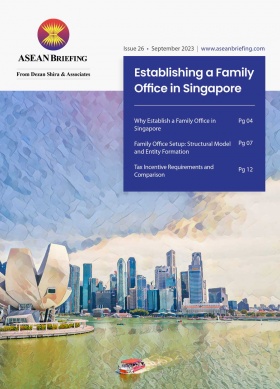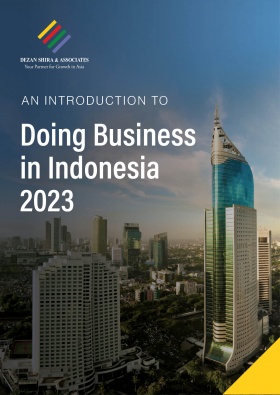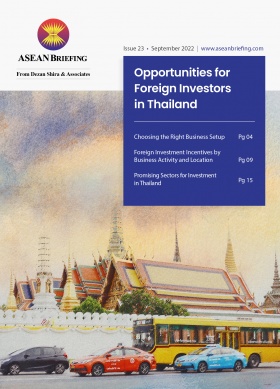Australia Unveils Southeast Asia Economic Strategy to 2040
On September 6, 2023, Australia’s government announced its ‘Southeast Asia Economic Strategy to 2040’ with the aim to deepen the country’s economic and trade engagements with the region.
By 2040, Southeast Asia is expected to have the world’s fourth-largest economy, with a compound annual growth rate of four percent between 2023 and 2040. The region thus offers opportunities for Australian businesses in a variety of sectors in Southeast Asia ranging from green energy to infrastructure to healthcare. As such, two-way trade could reach A$465 billion (US$302 billion) by 2040, an increase from the current level of A$287 billion (US$186 billion).
Under the 2040 economic strategy, the Australian government has identified several priority sectors that can help boost trade between Australia and Southeast Asia.
Key highlights of the priority sectors
Agriculture and food
Australia is already an important contributor to Southeast Asia’s food security needs, particularly for wheat, beef, and live cattle. Approximately half of the country’s wheat exports go to Southeast Asia, dominated by Indonesia, Vietnam, and the Philippines.
Population growth, rising urbanization, and rising incomes are drivers of Southeast Asia’s agricultural needs by 2040. As a result, the region is seeing an increase in the consumption of meat, dairy, manufactured foods, and wheat-based foods. Indonesia for instance, imports over 600,000 live cattle from Australia annually, or 62 percent of Australia’s total cattle and beef exports.Green energy
Southeast Asia faces significant challenges in transitioning to clean energy, particularly since most countries in the region rely on fossil fuels for their energy needs. The region faces the additional challenge of rising energy consumption which is expected to double by 2050 – the region requires approximately 350 billion cubic meters of natural gas alone by that year.
This presents huge investment opportunities for Australian businesses that provide sustainable, low-emission technologies. Cross-border electricity trading is one of the most effective ways to increase the use of renewables throughout Southeast Asia. The region requires an estimated 464 gigawatts of new electricity capacity by 2050, with an estimated 60 percent coming from renewables.
The Australia-Asia Power Link is one such project in the works which aims to deliver power from the world’s biggest solar farm in Australia to Singapore, via Indonesia, through undersea cables. Once completed, the project could supply up to 15 percent of Singapore’s energy requirements.
Infrastructure
Southeast Asia needs some US$3 trillion for infrastructure to keep pace with its economic development and demographic changes. Further, the region is poised to have a population of an estimated 766 million people by 2040, thus placing greater stress on cities and urban areas. Without significant investments in infrastructure will lead to greater pollution, congestion, and unequal access to basic services. Congestion in Indonesia’s capital, Jakarta, costs the economy an estimated US$5 billion per year, a significant amount considering the city accounts for one-fifth of Indonesia’s economic activity. The Philippines could lose approximately US$197 million per day due to congestion by 2035.
Coupled with Australia’s expertise in engineering, construction, and ICT, there is significant scope for Australian companies to meet the region’s infrastructure needs through private financing, particularly when public sector financing in most countries in Southeast Asia lacks the capacity to cover the infrastructure gap.
Healthcare
Southeast Asia’s growing population will create demand for healthcare services and infrastructure. Spending on healthcare infrastructure will place constraints on public budgets, meaning the private sector will be key to filling this gap.
There will be opportunities for Australian healthcare providers can provide higher-quality medical goods and services, particularly for prevention care. The region’s supplement market is expected to reach US$10 billion by 2026.
Moreover, there will be more than 100 million people in Southeast Asia aged 65 and over which will increase demand for specialized aged care. Also, there will be opportunities in digital health, such as through providing healthcare management software, electronic medical records, hospital information systems, and data analytics and diagnostics.
Digital economy
Southeast Asia’s huge digital economy can bring huge economic opportunities for Australian businesses. The e-Conomy report compiled by Google, Temasek, and Bain & Company states that there are some 460 million internet users in the region as of 2022, with the digital economy having a gross merchandise value of US$194 billion – a 20 percent year-on-year growth. This figure is expected to reach US$330 billion by 2025. Furthermore, the region has over 23,000 digital or tech startups with Singapore and Indonesia having the largest concentration of these startups.
Australian businesses will see opportunities in cybersecurity, e-commerce, software development, digital services, fintech solutions, and cloud services.
Education
Southeast Asia’s youthful demographics and burgeoning middle class will drive demand for high-quality education services. Education is one of Australia’s largest and most valued services to Southeast Asia, valued at US$5 billion in 2022 to the economy.
Australia has attracted more than half a million students from Southeast Asia over the past 20 years – Indonesia, Malaysia, Thailand, Vietnam, and the Philippines were the largest sources of international students studying in Australia in 2022.
Further, Southeast Asia is also one of Australia’s largest transnational markets with Australian universities having established offshore campuses, partnerships with local education providers, as well as online courses. As such, Australian higher education providers have campuses in Indonesia, Malaysia, Vietnam, and Singapore, such as Monash University and the Royal Melbourne Institute of Technology, among others.Australia’s vocational and tertiary education capabilities can thus support Southeast Asia’s skills uplift, particularly for nuanced subjects such as cybersecurity, ICT, biomedical sciences, and food production.
About Us
ASEAN Briefing is produced by Dezan Shira & Associates. The firm assists foreign investors throughout Asia and maintains offices throughout ASEAN, including in Singapore, Hanoi, Ho Chi Minh City, and Da Nang in Vietnam, in addition to Jakarta, in Indonesia. We also have partner firms in Malaysia, the Philippines, and Thailand as well as our practices in China and India. Please contact us at asean@dezshira.com or visit our website at www.dezshira.com.








